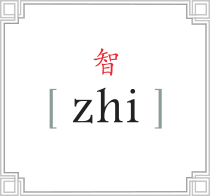New to Tea
Welcome to the world of tea!
First, let us proudly declare: “This is not your parents’ tea!” You’ll find no dull, bitter brews steeped from boiled packets of paper here. This tea would make Lu Tung sit up in his grave to write more poetry! It's divine and we're glad you found us.
Here in the United States, people are discovering the cornucopia of flavors and health properties that high-quality loose-leaf teas offer. While loose-leaf tea has been available in co-ops and health food stores around the nation for about the last twenty years, it has only just begun leaving the underground to hit the mainstream market. Thank goodness!
Join us as we outline the basics of tea. While it takes time to be a true Tea Master, Zhi will give you the basic info you'll need to start enjoying the world's best teas in minutes.
You probably have some basic questions, like:
- What exactly is tea? Where does it come from? How is it produced?
- How is it good for your health? Why is loose-leaf supposedly better than tea bags?
- What is the difference between white, green, oolong, and black tea?
Excellent questions! We will answer them all in this outline. Let's get started:
All real tea comes from the same plant, the evergreen Camellia sinensis. (Herbal tea is not tea by definition because its not made with the plant, but rather fruits and spices.) While there are several thousand varieties and uncountable production methods, all true tea comes from the very same plant! Differences in soil, elevation, climate, and climate change all affect the overall character of the tea leaves, just as they affect the character of fine wine.
Camellia sinensis grows in Taiwan, China, Japan, India, Tibet, Sri Lanka (Ceylon), and Argentina. Several other countries also cultivate it in small amounts. The US still has one tea garden in South Carolina.
High-quality loose-leaf teas are made from the top-most shoots of the tea plant. These shoots are plucked by hand or machine. Virtually all Zhi Tea is hand-plucked and hand-processed. Different plucking and processing methods turn these fresh leaves into the different kinds of real tea available: white, green, oolong and black.
Now that you have mastered the basics, let's take a closer look at the four basic categories of tea. We will proceed from the most common in the US to the more rare.
Let's begin with Black Tea.
I want to go straight to Oolong Tea!
I want to go straight to Green Tea!

